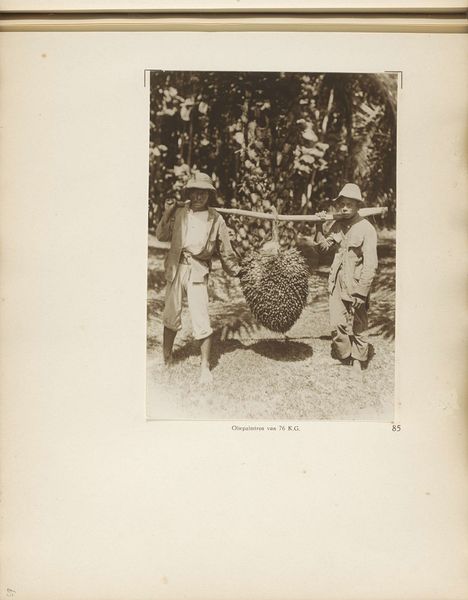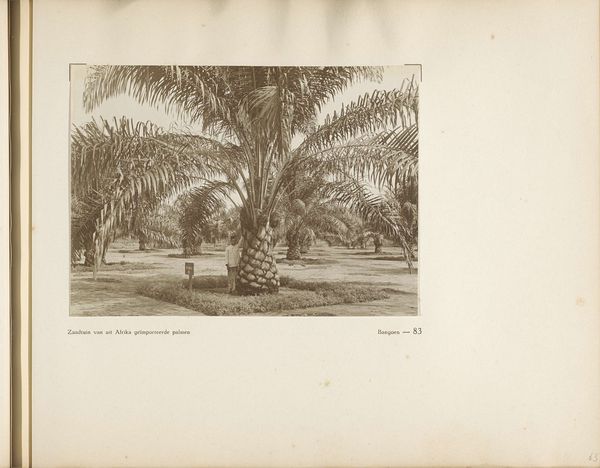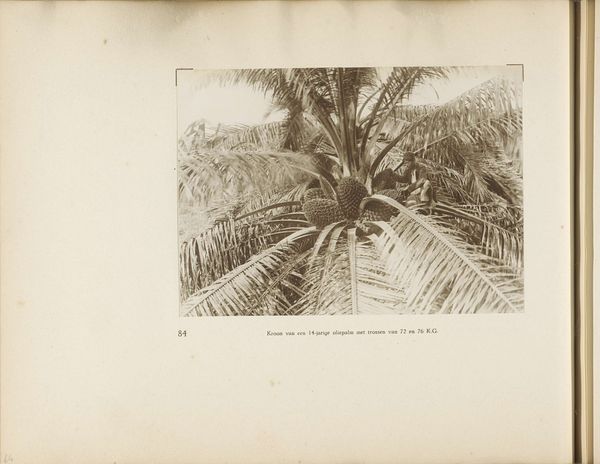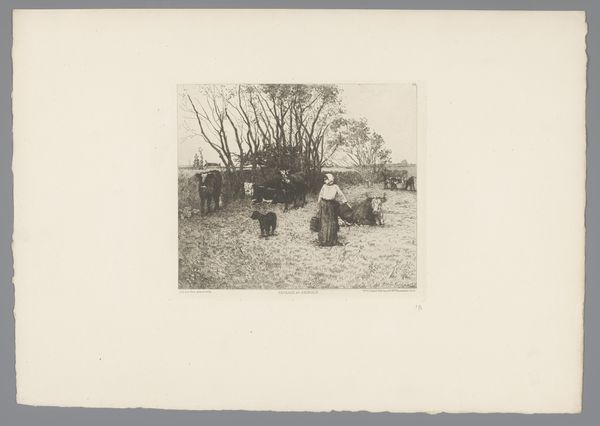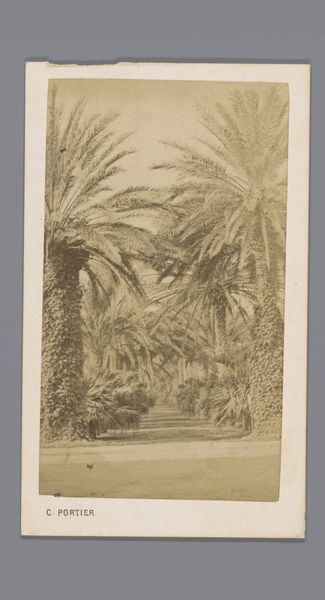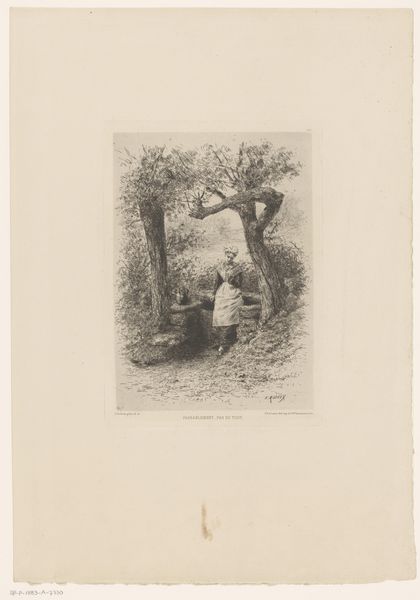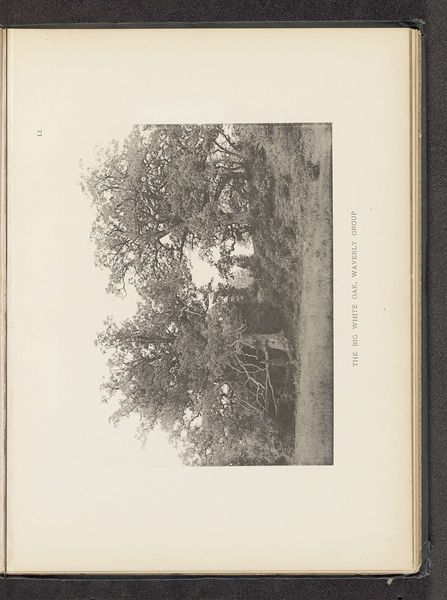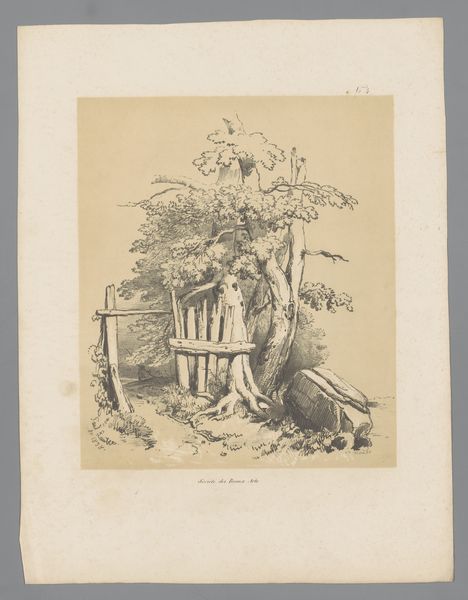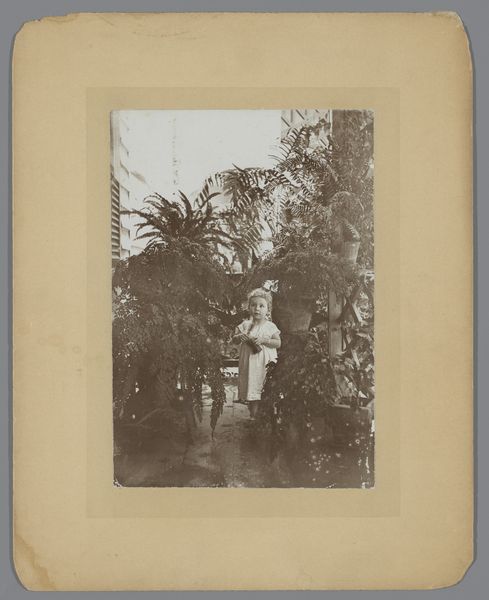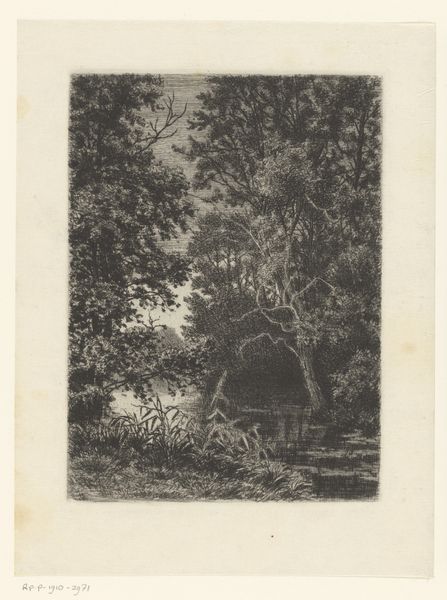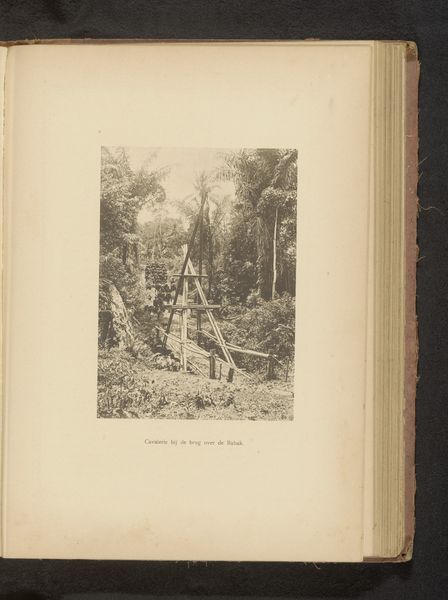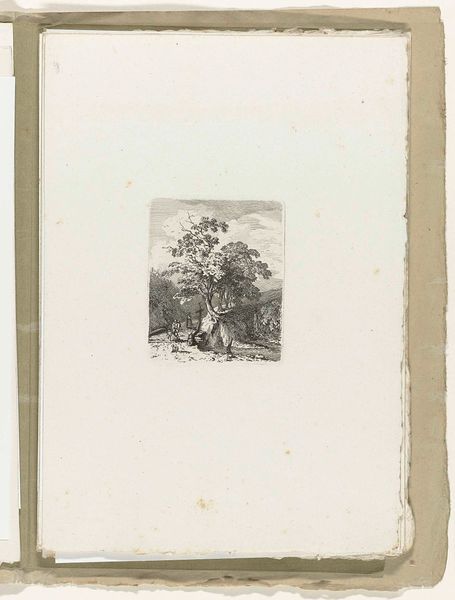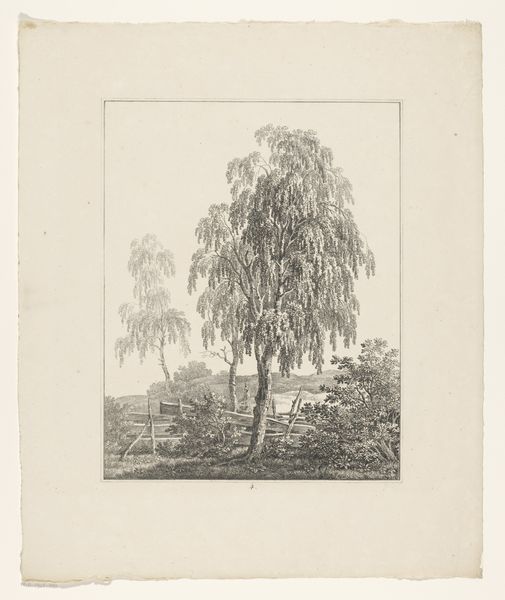
Pagina 82 van fotoboek van de Algemeene Vereeniging van Rubberplanters ter Oostkust van Sumatra (A.V.R.O.S.) c. 1924 - 1925
0:00
0:00
print, photography
#
portrait
#
still-life-photography
#
dutch-golden-age
# print
#
photography
#
realism
Dimensions: height 240 mm, width 310 mm
Copyright: Rijks Museum: Open Domain
Curator: Looking at this photograph, I'm immediately drawn to the central palm tree. There's an almost Edenic quality, though tempered by the figure wielding an axe. Editor: Indeed. The way the photographer, J.W. Meyster, frames the image gives a stark contrast. This photograph, taken around 1924 or 1925, is actually a page from a photo book documenting the activities of the General Association of Rubber Planters on the East Coast of Sumatra, then part of the Dutch East Indies. The Dutch title translates roughly as “Chopping the fruits.” The sepia tones lend an antiquated feel. Curator: Interesting! I see how it could represent paradise, the lush greenery and ripeness that the iconography communicates, with its full foliage representing bountiful resources, yet with the ax it also carries undertones of colonial exploitation, specifically the violent act of extracting natural resources. This speaks to the socio-political landscape of the time. The image represents human dominance over nature, where the rich nature must be “conquered." Editor: Exactly. And to build upon that, palms historically carry strong associations with victory, reward, and tropical abundance. But here, these established symbols seem deliberately inverted, no? I am getting a sense of that duality and the unsettling of established signs. Curator: I fully agree, and it leads to many unanswered questions regarding the historical record of this extraction industry and its effects on the colonized people there. It’s not only a photograph, but a documentation of a specific time period, which in and of itself makes an authoritative statement about historical events. We must recognize these embedded meanings and critically dissect the symbols for an open interpretation of history. Editor: What I’ll take away is the deliberate contradiction built into the picture's structure itself; these layers, while initially unsettling, help us decode a narrative loaded with many implications. Curator: I would encourage our listeners to investigate the larger historical narrative about plantation economies and what its symbols conceal.
Comments
No comments
Be the first to comment and join the conversation on the ultimate creative platform.
